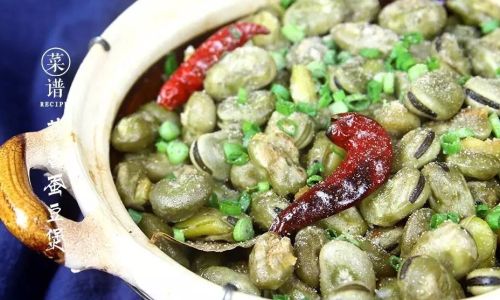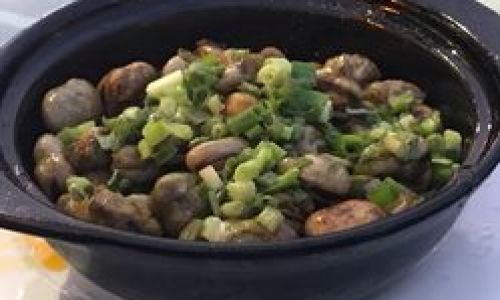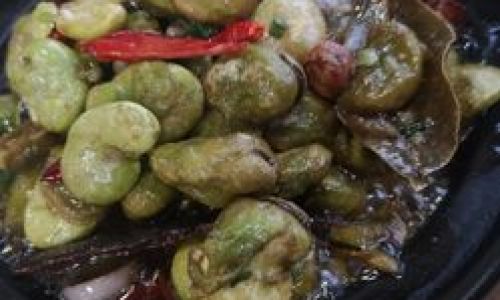Broad bean stew, a hearty and comforting dish, has been a staple in kitchens across the globe for centuries. Rooted in Mediterranean, Middle Eastern, and even Asian culinary traditions, this humble yet versatile meal celebrates the earthy flavor and creamy texture of broad beans (also known as fava beans). When prepared with care, this stew becomes a symphony of flavors—rich, aromatic, and deeply satisfying. Whether you’re a seasoned home cook or a novice in the kitchen, mastering the art of broad bean stew requires attention to detail, quality ingredients, and a willingness to experiment. This guide will walk you through every step, from selecting the finest beans to balancing spices and textures, ensuring your stew is nothing short of exceptional.

The Foundation: Choosing and Preparing Broad Beans
The success of any broad bean stew begins with the beans themselves. Fresh broad beans, available in spring, offer a vibrant green hue and a delicate, slightly sweet taste. However, dried broad beans, which are more widely accessible, provide a deeper, nuttier flavor and a creamier texture when cooked. If using dried beans, start by sorting through them to remove any debris or damaged pieces. Rinse them thoroughly under cold water, then soak them overnight in a large bowl. Soaking reduces cooking time and helps soften the beans, ensuring they cook evenly.
For fresh broad beans, shell them from their pods and blanch them in boiling water for 2–3 minutes. Immediately transfer them to an ice bath to halt cooking, then gently squeeze each bean to remove its outer skin. This step, though tedious, enhances the stew’s texture by eliminating the beans’ fibrous coating.
Building Flavor: Aromatics and Base Ingredients
A great stew is built layer by layer, starting with a robust foundation of aromatics. Onions, garlic, and celery form the trifecta of flavor in many stews, and broad bean stew is no exception. Dice one large onion and two stalks of celery finely, then mince four garlic cloves. Sauté these ingredients in olive oil over medium heat until translucent and fragrant. This process, known as “sweating,” mellows the raw edge of the vegetables and caramelizes their natural sugars, adding depth to the stew.
For a Mediterranean twist, consider adding a teaspoon of cumin seeds or a pinch of smoked paprika during this stage. In Middle Eastern variations, a cinnamon stick or a bay leaf can infuse the stew with warmth. The key is to let the spices bloom in the hot oil, releasing their essential oils and aromatics.
The Liquid Element: Broth and Tomatoes
The liquid component of your stew will determine its richness and consistency. Vegetable or chicken broth is a classic choice, but homemade stock elevates the dish significantly. If using store-bought broth, opt for a low-sodium variety to maintain control over the seasoning. For a vegetarian or vegan version, mushroom broth adds umami depth.
Tomatoes play a dual role in broad bean stew: they contribute acidity to balance the beans’ earthiness and thicken the sauce. Use one 28-ounce can of whole peeled tomatoes, crushing them by hand or with a wooden spoon as they simmer. Alternatively, fresh tomatoes, peeled and chopped, can be used during peak season.

Cooking the Stew: Patience and Precision
Once your aromatics are fragrant and your liquids are prepared, it’s time to combine everything. Add the soaked (or fresh) broad beans to the pot, followed by the broth and tomatoes. The ratio of liquid to beans is crucial—too much, and the stew will be watery; too little, and it may become stodgy. Aim for a 3:1 ratio of liquid to beans, adjusting as needed during cooking.
Bring the stew to a gentle simmer, then reduce the heat to low. Cover the pot partially, allowing steam to escape gradually. This slow cooking process, often referred to as “braising,” softens the beans and meld the flavors. Stir occasionally to prevent sticking, and skim off any foam that rises to the surface.
Seasoning and Texture: The Final Touches
Seasoning is where many cooks stumble, but it’s also where a good stew becomes great. Taste the broth periodically as it cooks, adjusting salt and pepper gradually. A splash of lemon juice or red wine vinegar at the end can brighten the flavors, while a drizzle of honey or a pinch of sugar balances acidity.
Texture is equally important. For a rustic stew, leave the beans whole. For a smoother consistency, use a potato masher to crush some of the beans against the side of the pot, thickening the broth. In some regions, a spoonful of tahini or yogurt is stirred in at the end for creaminess.
Enhancements and Variations
Broad bean stew is incredibly adaptable. Here are a few ways to customize it:
- Protein Boost: Add diced lamb, chicken, or chorizo during the sautéing stage for a heartier meal.
- Vegetable Medley: Incorporate spinach, kale, or carrots during the last 15 minutes of cooking for added nutrition.
- Spice It Up: A pinch of chili flakes or harissa paste lends a subtle heat, while fresh herbs like parsley or cilantro add freshness.
- Grain Integration: Serve the stew over couscous, quinoa, or rice to soak up the flavorful broth.
Troubleshooting Common Issues
Even seasoned cooks encounter hiccups. Here’s how to fix them:

- Undercooked Beans: If your beans remain firm after the recommended cooking time, add a pinch of baking soda to the broth. This raises the pH, softening the beans faster.
- Overly Bitter Flavor: Balance bitterness with a touch of sweetness—honey, maple syrup, or a grated carrot added early in cooking.
- Thin Broth: Simmer uncovered for 10–15 minutes to reduce the liquid, or thicken with a cornstarch slurry.
Serving Suggestions
Broad bean stew is a meal in itself, but pairing it with the right accompaniments elevates the experience. In Egypt, it’s often served with fluffy rice and a side of pickled vegetables. In Italy, crusty bread is essential for mopping up the sauce. For a lighter option, pair it with a crisp green salad dressed in lemon vinaigrette.
The Cultural Tapestry of Broad Bean Stew
Beyond its culinary appeal, broad bean stew carries cultural significance. In ancient Rome, broad beans were associated with fertility and the afterlife, often included in funeral feasts. In Egypt, ful medames—a dish of stewed fava beans—is a national staple, eaten for breakfast or dinner. In China, broad beans are stir-fried with garlic and chili, showcasing the ingredient’s adaptability across continents.
Conclusion: The Joy of Slow Cooking
In an era of instant gratification, broad bean stew invites us to slow down. It rewards patience, attention, and a willingness to savor the process as much as the result. Whether you’re nurturing a pot on the stove on a lazy Sunday afternoon or sharing it with loved ones around a communal table, this dish embodies the warmth and comfort of home cooking.
Mastering broad bean stew is not about perfection but about intuition. Trust your palate, experiment fearlessly, and remember that every stew tells a story—of tradition, innovation, and the simple pleasure of breaking bread (or beans) with those you hold dear. So the next time you find yourself with a bag of broad beans, embrace the journey. Your taste buds—and your guests—will thank you.






0 comments